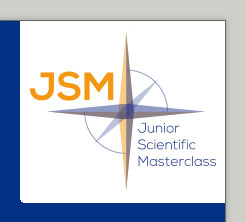Onderzoeksproject aanpassen
Projecten zijn uitsluitend aan te passen door bij het project behorende onderzoekers.
Geef via het uitrolmenu aan welke onderzoeker u bent. Nadat op u de button 'Edit project' heeft geklikt, wordt automatisch een e-mail verstuurd naar het e-mailadres van de onderzoeker die u heeft gespecificeerd.
In deze e-mail staat een link waarmee u het project kunt wijzigen.
Project properties
| Title | Safety of conservative surgery in postmenopausal women with Borderline Ovarian Tumors. |
|---|---|
| Keywords | ovarian cancer borderline tumors of the ovary operative surgical procedure |
| Researchers |
drs. K. de Decker dr. A.J. Kruse |
| Nature of the research | Retrospective cohort study of patients diagnosed with a Borderline Ovarian Tumor. |
| Fields of study | gynaecology |
| Background / introduction |
|---|
|
Borderline ovarian tumors (BOTs) are non-invasive tumors that display greater epithelial proliferation and cytological atypia than benign tumors of the ovary, but less than their malignant counterparts. Premenopausal patients who finished childbearing, postmenopausal patients and patients with advanced stage disease are treated with radical surgery, consisting of bilateral salpingo-oophorectomy and resection of macroscopically visible peritoneal lesions. For patients who want to preserve their fertility, conservative surgery consisting of unilateral salpingo-oophorectomy or cystectomy in cases of bilateral ovarian involvement or when the disease develops in the only remaining ovary may be a valuable alternative [1,2]. When compared to patients with a Borderline Ovarian Tumor, patients with a benign tumor are at lower risk of developing ovarian cancer in the contralateral ovary following unilateral removal of the ovary. However, also in case of a benign appearing cysts/tumor of one of the ovaries, usually both ovaries are removed in postmenopausal women, in order to reduce the risk of developing ovarian carcinoma in the contralateral ovary. It has been shown that the ovaries remain hormonally active for years in postmenopausal women and that pre-, peri- or even early postmenopausal (possibly up to 65 years of age) removal of both ovaries might increase the risk of mortality and cardiovascular disease. It is suggested to counsel postmenopausal patients (till 65 years) about the risks and benefits of removal of the contralateral ovary in case of a benign (appearing) tumor [3]. |
| Research question / problem definition |
|---|
| Conservative management of Borderline Ovarian Tumors has been studied well and seems to be safe, but these studies mainly focused on women of childbearing age that want to preserve their fertility [4]. The aim of the present study is to investigate whether it is safe to perform a unilateral ovariectomy/salpingo-oophorectomy in case of a unilateral borderline ovarian tumor in postmenopausal women. |
| Workplan |
|---|
| The research project (wetenschappelijke stage/research clerkship) will be conducted at the department of Obstetrics and Gynecology of the Isala Hospital (Zwolle) and University Medical Center Groningen (Groningen). It concerns a retrospective cohort study during which the student will create a database using several data registries. After completing the database, data will be analysed in order to answer the research question(s). The internship guidelines of the University of Groningen will be taken into account during the project. |
| References |
|---|
|
1. Robert J. Kurman, International Agency for Research on Cancer. WHO classification of tumours of female reproductive organs. Lyon: IARC; 2014. 2. Colombo N, Sessa C, Bois AD et al. ESMO–ESGO consensus conference recommendations on ovarian cancer: pathology and molecular biology, early and advanced stages, borderline tumours and recurrent disease. Int J Gynecol Cancer. 2019;29(4):728–760. 3. Modules Vergroot Ovarium. Modulaire herziening en update van modules uit de Richtlijn Het Vergrote Ovarium (2013). Nederlandse Vereniging voor Obstetrie en Gynaecologie, oktober 2020. 4. Vasconcelos I, De Sousa Mendes M. Conservative surgery in ovarian borderline tumours: A meta-analysis with emphasis on recurrence risk. Eur J Cancer 2015 Mar;51(5):620-31. |


